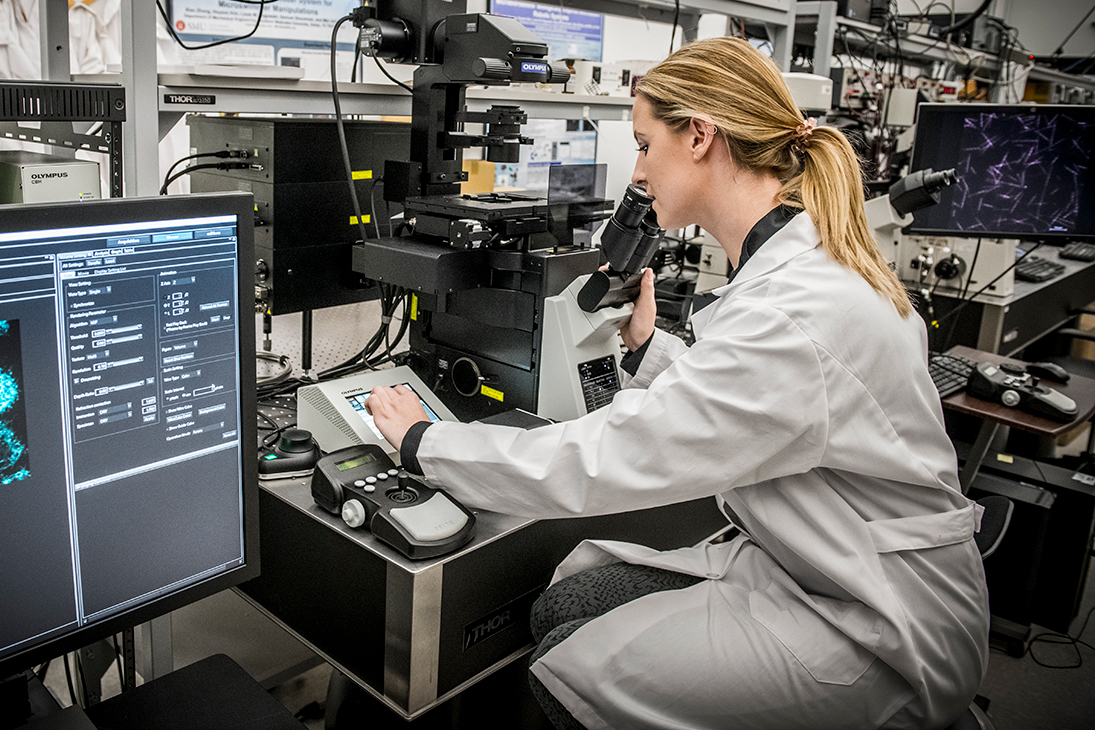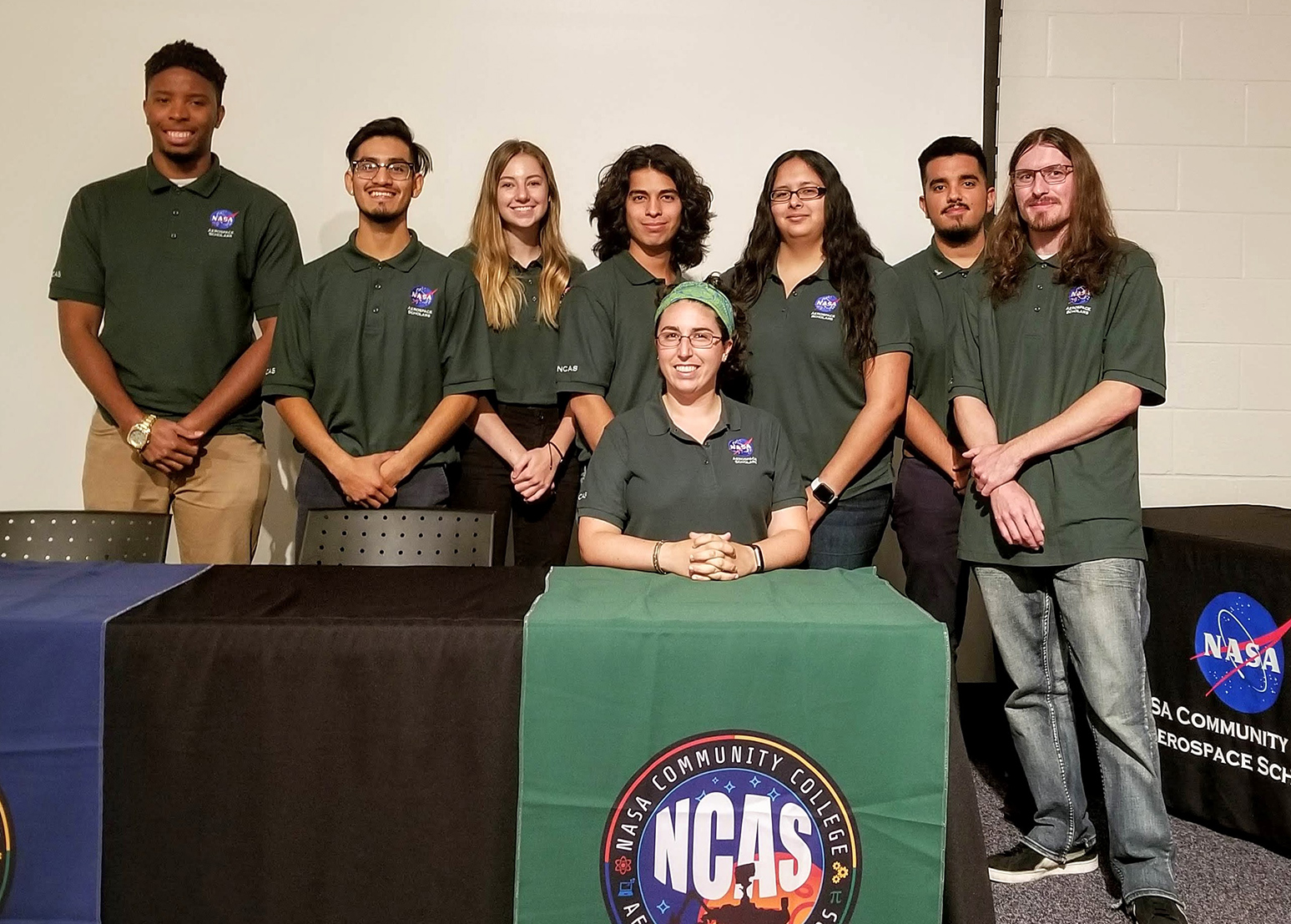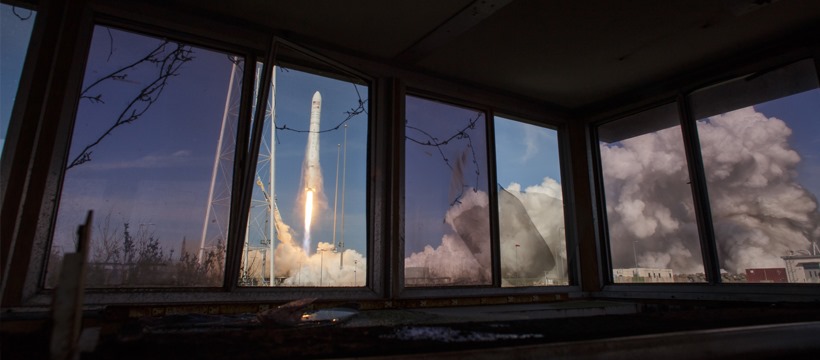Finding her ‘yes’

Hannah Clark ’23 never dreamed NASA would be in her future. Now she’s completing her second stint with the space agency where she’s working on an engineering challenge for other students.
Clark, a mechanical engineering major interning at NASA’s Wallops Flight Facility (WFF) in Virginia, talks about the experiences that opened her eyes to paths within her reach and instilled the confidence to shoot for the stars.
Did you ever imagine you would blaze the kind of path you’re currently on when you were just getting started?
I never would have thought that NASA would be in my future when I was graduating high school. Back then, my desire was always to attend a traditional university away from home. I ultimately decided to register for a local community college in order to help care for my three little brothers and avoid student loans.
That decision wasn’t easy. For a long time, I felt like I had disappointed my family and teachers who had supported my academic success throughout high school and witnessed the pressure and stress I put on myself to get straight A’s and to be involved in extracurriculars.
However, I was determined to make the most of my time at community college and began to see it as an opportunity to shine instead of something to be ashamed about.
One of my physics professors recommended that I apply for the NASA Community College Aerospace Scholars (NCAS) program. To my surprise, I was accepted and flown to WFF in Virginia to compete in a NASA robotics competition. All of a sudden, working at NASA didn’t seem like such an unachievable dream, and I began to see it as a real career possibility. I am so thankful I took a chance on myself and hope to encourage my peers to do the same.

You started your undergrad journey at Tarrant County College, and now you’re a junior working on a mechanical engineering degree in the Lyle School of Engineering. What influenced your decision to transfer to SMU?
The decision to attend community college turned out to be one of the best I ever made, and it allowed me to discover who I am and what I want out of my college experience. When finally transferring to a four-year university, I was much more focused in my school search. I found that SMU had everything I wanted: small class sizes that foster strong relationships with professors, research opportunities and a strong engineering program.
Additionally, I was extremely grateful to have been offered SMU’s North Texas Community College Transfer Scholarship, which made attending SMU a reality. I have been able to get involved on campus with the Mustang Rocketry Club and the Society of Women Engineers, and I recently accepted a research position in SMU’s Geotechnical Engineering Lab.

How has your experience interning at NASA been this fall?
It still feels unreal to say that I am a NASA intern. It is a privilege and honor to be working for this agency and alongside such talented and inspiring individuals. While I admit that I was initially intimidated and star-struck by NASA personnel, I’ve experienced nothing but inviting and friendly interactions with every person I have met.
I am captivated by the passionate people proudly sharing the projects they are working on, and I’m enthusiastic about finding my own niche at NASA. While many believe that only supergeniuses who never have to touch a calculator work at NASA, my experience here has made me realize that a career at NASA is accessible to anyone who is passionate enough.
I have been able to network and form relationships with NASA engineers, participate in professional development workshops and attend speaking events that have all allowed me to learn about countless NASA missions in development. My current project has enabled me to strengthen my communication, technical writing and project development skills.
What can you tell us about the experiments you’re working on?
I am supporting the planning, development and implementation of the NASA Community College Aerospace Scholars program where students participate in a five-week online course followed by a unique NASA experience.

I am collaborating with my team and interns from different NASA centers to develop an advanced workshop for NCAS alumni. We are investigating a challenge model where students compete in a NASA engineering challenge to design, build and test a scientific payload that could eventually be launched from one of the student flight platforms. We are conducting research regarding criteria such as materials cost, funding sources, partnerships and regulations to gain a clear perspective on the next steps in the execution of this advanced workshop.
What kind of advice do you have for fellow transfer students with ambitious goals?
The biggest thing I’ve taken away from my time at NASA is to not be afraid of failure. I applied and was rejected from several opportunities before landing this position so perseverance is key for obtaining ambitious goals.
You are going to hear “no” a lot on your journey, but as I heard Goddard Space Flight Center’s Edward Gonzales say, you must persist to “find your yes.”
Even if you feel like you don’t meet all the requirements for a certain position, enthusiasm can often fill the gaps in your experience. Show that you are willing to learn, roll with changes and be passionate about the work, and you will go far!
What’s next for you?
I have three semesters left before graduation and am scouting out different opportunities. After completing a project development-based internship at NASA, I am hoping to further my journey here and contribute to missions creating space technology, such as life support systems or crew modules that will enable astronauts to safely travel farther from Earth.
Regardless of where I end up, I am as confident as ever in my career path and will no longer hesitate to have ambitious goals. For now, I am focused on making the most of my internship by getting involved and soaking up as much knowledge as I can.

Request Information